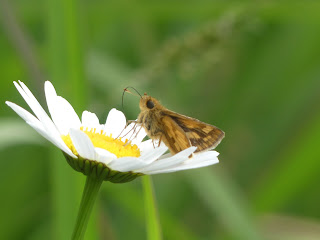Eastern Tent Caterpillars
Earlier this spring some wooded areas were inundated with the tent-like webs of the Eastern Tent Moth caterpillars These caterpillars are native to North America, and prefer to feed on apple, crabapple, and cherry trees, though they're not extremely picky eaters.
When I was a kid, we mistakenly thought these were Spongy Moth caterpillars, an invasive pest you probably knew by a different name. As an invasive species, the Spongy Moth caterpillars are probably more destructive of the 2 since they have fewer natural predators or parasites. Although the Spongy Moth does make silk, it never makes the tent-like webs found on trees.
It sounds to me like tent moth caterpillars are less likely than Spongy Moth caterpillars to damage trees, at least partly because they eat leaves in the spring when trees are better able to regrow their leaves, and partly because they do have plenty of natural predators/parasites in our ecosystem so their populations don't generally get as large.
When I initially did some reading to understand these caterpillars, I thought the predation situation was straightforward:
- As a native species, birds would feast on Eastern Tent Moth caterpillars.
- As an invasive species, Spongy Moth caterpillars wouldn't be recognized by birds as a food source.
- This article says that Eastern Tent Moth caterpillars can regurgitate cyanide when threatened.
- And this article says that the hairs on the Eastern Tent Moth caterpillars is an irritant, so many times birds will only eat the head/tail.
- This article starts out singling out the (not extremely common) Black-billed Cuckoo as one of the few birds able to eat tent moth caterpillars and (subsequently) regurgitate the hairy irritants. But then it goes on to say that birds like jays, robins, blackbirds, cardinals, turkeys, and ducks will also eat them. That set of birds comprises an awfully large number of the birds we see here in New Jersey.
- And this article also supports the idea that lots of our local birds eat tent moth caterpillars.
- Though some articles have explanations about how the birds can deal with the caterpillar hairs, no explanation is given how they deal with cyanide.
- Finally, Wikipedia reports that birds like cuckoos, starlings, grackles, and blackbirds will eat Spongy Moths in addition to tent caterpillars. (I'm assuming the hairs of the Spongy Moth and tent moth caterpillars present similar irritation issues to predators.)
- Despite challenges to eating them, many birds will eat tent caterpillars.
- Quite a few birds (though probably not as many) will also eat Spongy Moth caterpillars, especially when they're abundant and easy to find.
 |
| May 13, 2022 at Duke Farms Photo 199461853, (c) jpviolette, some rights reserved (CC BY-NC) |
 |
| May 13, 2022 at Duke Farms Photo 199461889, (c) jpviolette, some rights reserved (CC BY-NC) |



Comments
Post a Comment